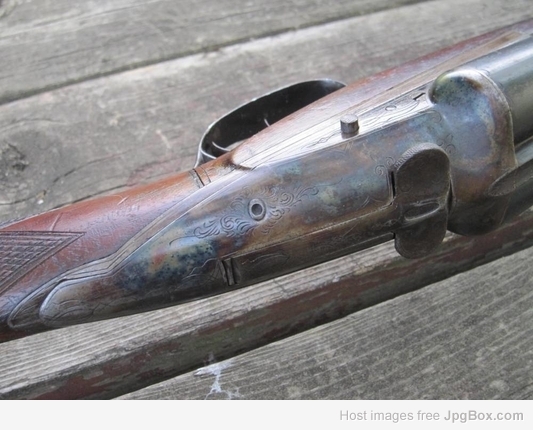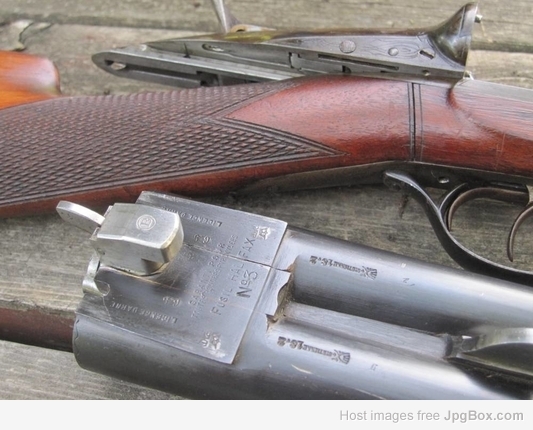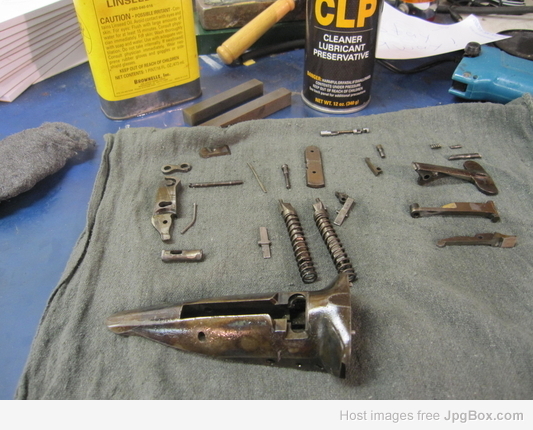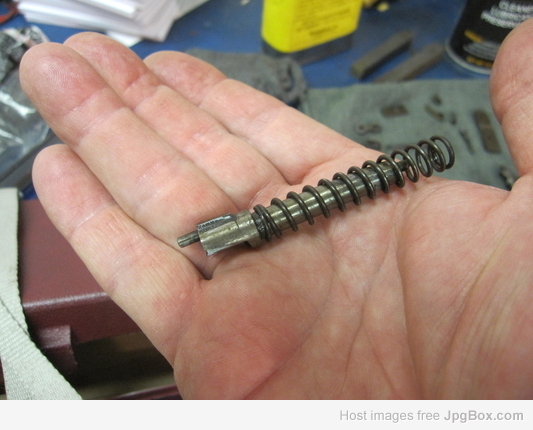I've posted in the past about the typical 50 year maintenance on a Darne R model, mostly just pulling the front wood off, cleaning around the triggers, retensioning the pin for the main spring, and putting a dash of lube where it will do some good. For most of the guns out there, this will be all they need.
But, every now and then, you have to get further in, so to speak.
This is an interesting gun. It shows little to no use, but, is in far from nice condition. It is old, the barrel flats are marked 6.5 instead of 65. It also has contoured detonators, a feature much more common a decade or two prior to WWII, and not seen much after the war. There are a variety of serial numbers in the gun, and it has a few fitting issues, two of which I have resolved, a balky safety button, and frozen ejection mechanism. The trigger pulls are horrific. I'm not done solving fitting issues, either.
I do know it was a WWII bring back. The nasty liberal I bought it from tipped her hand too soon, saying she didn't want it in her home, which lead to a good deal for me.

This is a view of a push button safety, something I didn't think was used until James Wayne was importing the guns. This example was poorly fitted, first time I have had reason to find fault with metalwork on a Darne. This safety is different from the one used on the James Wayne guns.

That being said, when the safety is in the on position in an R model Darne, the sears and triggers are blocked, and the gun cannot fire, period.
This is where angels, and most good gunsmiths, fear to tread:

This is a stripped R model breech block. I'm not going to tell you how to do it, as I'm sure not making that public will save me some grief and time on the phone in the future. I will tell you it can be taken to this point with a screwdriver, a small brass hammer, and a bent nail, assuming you have two good hands.
I've told people that they can feel free to dry fire a Darne if the barrels are in place on the gun. This is why. The Darne is striker fired, similar to a Mauser, and the assembly is quite robust:

A good soak was a good start on this one. I don't know if it was a lunchbox gun, or built from parts after the war, or exactly what happened, as it has a hodge-podge of different numbers on it's bits. The bores are beautiful, it has useful chokes of .007 and .020 on .724 bores. The gun is a bit of a wreck, looks wise, and I don't think I would even call it broken in. It is quite stiff to cycle.
I seldom get this far into a Darne. As a result it takes me two or three tries to jiggle, wiggle, and get the stuff back in the sliding breech in the proper order. It was a three beer job tonight, but, I'm fresh on it, again, and I bet I could do it in 1 or 2, tomorrow.
Best,
Ted